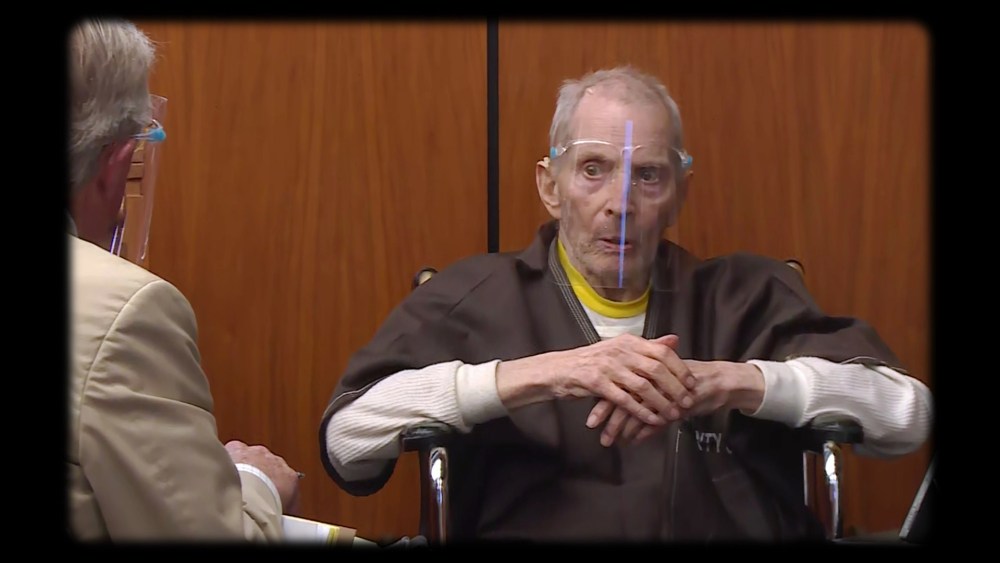Entertainment
HBO True Crime classic can’t top itself

No one could top the sensational ending of ‘The Jinx’ – not even ‘The Jinx’. In 2015, HBO’s true crime docuseries profiling New York real estate heir and alleged serial killer Robert Durst shocked the world by catching Durst on a hot mic while making an apparent confession. “Of course they killed them all” was hardly a “smoking gun” from a legal perspective, but for television, those five words were the kind of stunning revelation that decades-old cold cases rarely provide. That Durst himself uttered the line in his trademark croaking rasp gave the entire saga the atmosphere of a Greek tragedy, epitomizing the millionaire’s bizarre urge to outdo filmmaker Andrew Jarecki despite his own good fortune.
“The Jinx: Part Two” ends on a more anticlimactic note. Despite Durst’s 2021 conviction for the murder of his former friend Susan Berman and, in 2022, his death in prison, the legal aftermath of his crimes continues to play out in the courts. (In a particularly cruel twist, the conviction was posthumously vacated due to an incomplete appeal.) The final scene in the six-episode season, the same length as the first, is taken from a deposition in an ongoing case – a wrongful death lawsuit. brought by the family of Durst’s first wife, Kathie McCormack, against his estate. The opposing counsel asks Durst’s second wife, Debrah Charatan, whether her apparent complicity in exchange for access to Durst’s fortune has been worth it. “I think it was,” she says.
The exchange lacks the booming punch of its predecessor, while also establishing the two projects’ differing objectives. “The Jinx” isn’t the first true crime sensation to attempt a sequel: “The Staircase,” “Tiger King,” “The Vow” and “Making a Murderer” have all spawned sequels that expand their stories without replicating the original’s viral success . These second seasons also tend to share a general pattern. The first episodes introduce a case into the world by looking backwards, into the past; the next batch charts the messy interaction between story and narrator, often shifting to the present tense. While reporting on “The Jinx,” Jarecki and his colleagues shared evidence they discovered with police, leading to Durst’s arrest the day before the “kill ’em all” clip first aired. If “The Jinx” had never been made, the events of “The Jinx: Part Two,” which follows Durst’s prosecution in Los Angeles, would never have happened.
The uncomfortable reality is that while Jarecki and his team have a legitimate claim to further the cause of justice for Durst’s victims, they have also generated a vast amount of material for their own potential use. Just as the back cover of “The Vow” focused the trial of NXIVM leader Keith Rainere and “Making a Murderer’s” on the appeals for suspects Steven Avery and Brendan Dassey, “The Jinx” uses trial testimony, prison phone conversations, legal documents and interviews. with the defense and prosecution teams to put together a new arc. It’s an approach with a mixed track record: Where legal proceedings gave the dreamy, elliptical “The Vow” a needed sense of structure and urgency, “Making a Murderer” slowed to a halt as it traded decades of exposition for the sloth. -like pace of active litigation. Portraying an ongoing process can provide urgency or the lure of exclusive access. It also deprives filmmakers of the distance that allows them to organize years of events into a readable story.
Ultimately, “The Jinx: Part Two” lacked any major revelations. Audiences are already familiar with Durst’s bizarrely compelling attitude, a ubiquity demonstrated through montages of “SNL” impressions and other pop culture ephemera. The conversations in prison, with Charatan and other loyalists, are funny – Durst shows off his push-up form! – but all parties involved know they are being watched. Some of the most crucial developments in the trial, such as Durst suddenly admitting to writing a letter that he previously said could only have come from Berman’s killer, happen in the fine print of lengthy case files. The now iconic hot mic moment revolved around the same letter, which linked Jarecki to Durst via a telling misspelling of “Beverly Hills.” The contrast between the overwhelming impact of one scene and the disappointing shrug of the other is, of course, the presence of Durst himself providing an audible response.
Without any major twists, ‘The Jinx: Part Two’ struggled to create a compelling story from the trial itself. Given the widely known outcome, there was largely doubt as to whether prosecutor John Lewin could convince the jury. Lewin and his assistants are also not ideal protagonists in a show that is in large part about the inability of the justice system to account for Durst’s victims and their families. The hostile courtroom setting seems like a ready-made replacement for Jarecki’s earlier conversations with Durst, but these scenes are a placebo at best. When Durst takes the stand and emphasizes his vulnerability with a neck brace and adjustments for a hearing impairment, it’s a pale imitation of the cocky eccentric who once agreed to be interviewed.
Instead, “The Jinx: Part Two” functioned best as a kind of B-side to “Part One,” expanding the cast of characters while delving deeper into Durst’s relationships with Berman and Charatan. (Berman and Durst, we learn, formed a friendship trio with Nick Chavin, a former musician who specialized in . corner of the mid-century Jewish elite, which also includes Durst’s family and several hangers-on. This expanded scope also allows Jarecki to pursue a new angle: By broadening his lens beyond Durst alone, “The Jinx” asks broader questions about the environment and individuals who made his misdeeds possible.
This theme is more ambiguous than the black-and-white juxtaposition of guilt or innocence, and is better suited to a true crime sequel than a vain attempt to recapture lightning in a bottle. Even Berman, according to Jarecki’s account, was not a perfect victim and even slandered Kathie Durst after her disappearance – a move that is strangely similar to how disdainful Charatan is for Berman. An entire network of friends and family looked the other way when Durst was confronted with his obvious misdeeds for their own financial gain, and few of them will face any real consequence. When Jarecki presses Chavin to explain his lengthy denial, he comes closest to the electricity of interrogating Durst. There’s no satisfaction in catching a criminal red-handed, but in this regard at least “The Jinx: Part Two” isn’t aimed at catharsis; it wants the audience to experience the discomfort of collective moral failure. It is easier to accept the lack of liberation when it is the absence.













